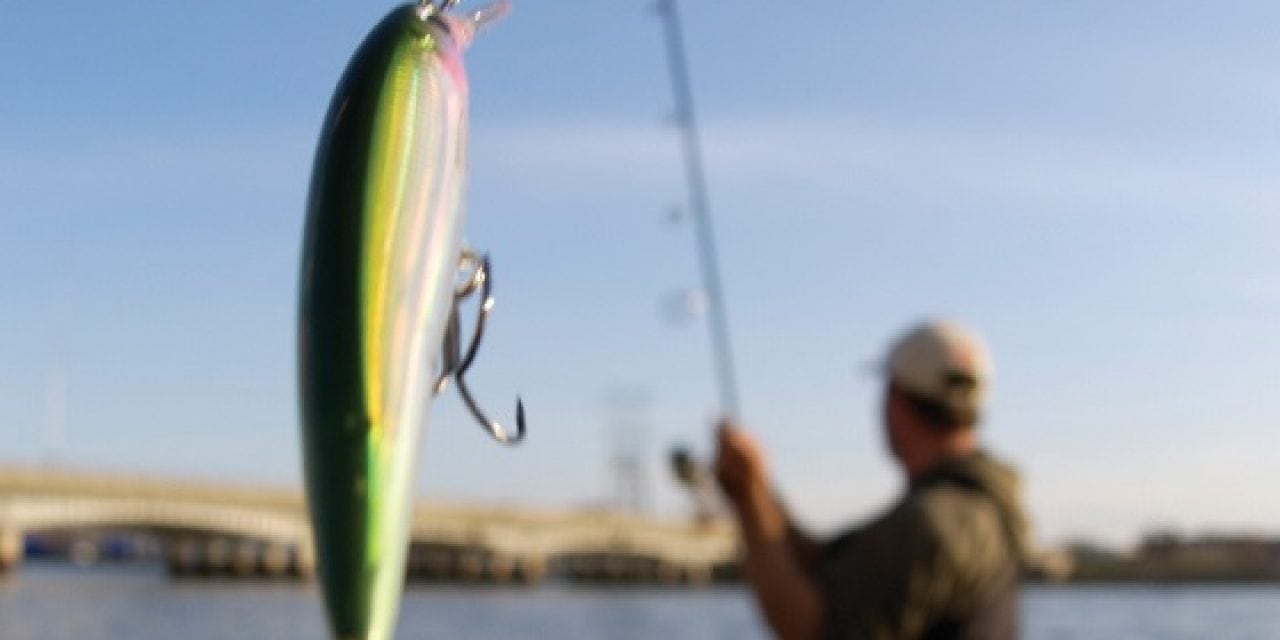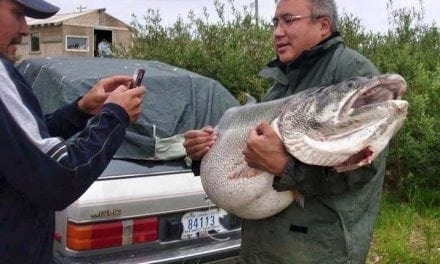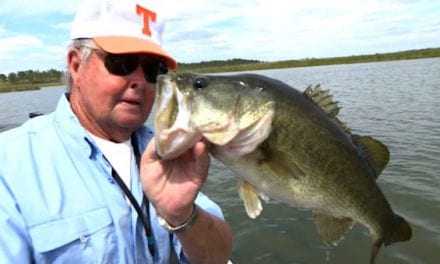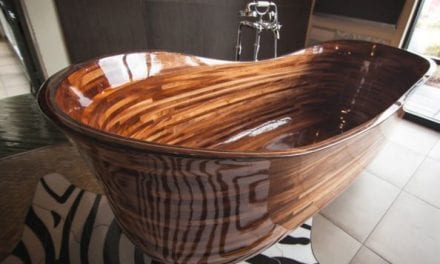When the water’s cold, Rapala has the baits that heat up the action. If you’re not slinging Shad Raps, Husky Jerks, X-Raps, or DT’s this time of year, you might as well stay home. So says a Who’s Who of Bassmaster Classic contenders — Michael “Ike” Iaconelli, Ott DeFoe, Brandon Palaniuk and Pete Gluszek. The world championship of competitive bass fishing since 1971, the Classic has been contested in the cold water of February since 2006.
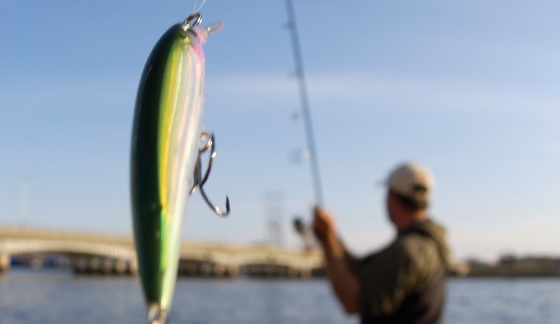
In water 55 degrees down to nearly freezing, a Shad Rap’s tight wobble “makes fish bite that won’t really bite a lot of other baits,” says DeFoe, a three-time Classic contender and 2011 Bassmaster Rookie of the Year. The reason? “It’s a balsa-wood bait that has a natural swimming-type motion,” he explains. “And it still resembles a shad better than anything else out there.”
Gluszek, another three-time Classic contender, agrees. “It’s got to be one of the greatest-all-time cold-water baits ever designed,” he says.
Iaconelli, a 13-time Classic contender and 2003 Classic Champ, appreciates the Shad Rap’s super-tight wobble, lack of a rattle and neutral action. “It’s probably the best wintertime crankbait,” he says. But it’s not his only cold-water search bait. “Rapala makes a bunch of amazing baits for the winter/pre-spawn pattern,” he says.
Among his other favorites are the Husky Jerk and X-Rap. “I think about the activity level of the fish, the mood of the fish, and the water temperature,” he explains. In 50- to mid-40-degree water, he favors X-Raps. He ties on Husky Jerks “when that water gets super cold” — from the mid-40s down to almost freezing.
Palaniuk, a 4-time Classic contender, threw Rapala DTs en route to a runner-up finish in the 2013 Classic, the coldest championship on record. Morning temperatures were 21, 19 and 26 degrees in the three days of competition, causing cold water temps as well. In such conditions, “it’s tough to beat” a Rapala balsa bait, Palaniuk says.
Rapala baits trigger bites better in cold water than imitators, Iaconelli explains, because their unique, balsa-wood bodies “kind of just hover” when paused, rising ever so slowly. That action matches the hatch. “The forage that bass feed on is cold too and doesn’t really move quick,” he says. “So you don’t want a fast-rise bait.”
When bass are in transition between their winter slow-down and a pre-spawn feeding spree, even slight water-temp swings can determine which of the above baits will work best on any given day. Air temperature, precipitation, wind and sunshine – or lack of them – all affect water temps. “Weather can highly dictate how those fish react, or what stage they’re going to be in,” Palaniuk explains. Several days of bright sunlight with moderate temperatures and light wind can raise water temps enough to change a prevailing pattern.
Shad Rap Tips
When water temps fall below 55 degrees, DeFoe throws No. 5 and No. 7 Shad Raps at gravel and chunk rock on sloping banks, retrieving it very slowly and stopping it occasionally on and around cover.
“Whenever I feel it coming up on a bigger rock, maybe a piece of brush, a stump, or anything like that, I want to pause that bait — kind of let it hang there a second,” he explains. “That’s when you’re going to get a lot of bites.”
He throws Shad Raps on small-diameter 6- to 8-pound-test fluorocarbon line. “That’s really going to help you get that bait way out there and get it down and reach those fish you’re trying to target,” he explains.
In his home state of New Jersey, Gluszek slings a Rapala Shad Rap in the spring, fall and — weather permitting — winter. He too appreciates its lack of rattles.
“That’s such a huge factor in heavily pressured water and cold water, where fish can be somewhat intimidated,” he explains. “The silent nature of balsa creates a tremendous triggering mechanism. The fish key solely on the bait’s signature in the water. They’re something special.”
DeFoe agrees. “It’s such an easy bait to use and an easy bait to catch fish on,” he says. “You’re crazy if you’re not out there fishing with it.”
Watch DeFoe explain more about his Shad Rad tips and tactics here.
Husky Jerk Tips
A Husky Jerk works well in multiple situations — off sunken islands or rock points, whether fish are holding deep or shallow, and in cold water and warm. It’s in cold water though that Iaconelli ties one on most often.
“It’s got a more neutral action,” he explains. “A little less side to side [movement], a little bit tighter, a little more natural and deliberate. And when [fish] are cold and lethargic, nothing beats the Husky Jerk.”
Bass, pike and walleyes will all hit Husky Jerks, especially in cold water. For bass and pike, use a jerk-jerk-pause cadence. For walleyes, downsize baits and employ a sweep-sweep-pause cadence.
Watch Iaconelli talk more about when and where to use a Husky Jerk here.
X-Rap Tips
When water temps are in the mid-40s to mid-50s, both Iaconelli and Gluszek, co-founders of The Bass University, will cover water with an X-Rap.
“It mimics the activity level of the fish and it really resembles what the baitfish are doing when the water’s cold, but not super cold,” Iaconelli explains. “Its got a little bit more erratic movement [than a Husky Jerk].”
Based on that erratic action, Gluszek calls the X-Rap a “power” jerkbait. “You can make that bait dart back and forth in really erratic fashion,” he explains. “In certain conditions, that’s a huge trigger [for bites]. In other scenarios, you need more of a subtle approach.”
Watch Iaconelli talk more about when and where to use an X-Rap here.
DT Tips
Swimming with a side-to-side action that only balsa can achieve, DT’s pull with ease when cranked. Perfectly weighted to rest in a quick-dive, nose-down position allowing for immediate descent to desired depth, DT’s can be easily cast 150 feet.
“DT’s are sort of a combo of a Shad Rap and a traditional wider-wobble crankbait,” Iaconelli explained prior to the 2013 Classic. He finished 4th in that tournament, throwing both Husky Jerks and DT-6’s, among other baits. “DT” stands for “dives to.” The number after “DT” indicates the maximum depth to which the bait will dive (when paired with the correct line, rod and reel). A DT-6, for example, dives to six feet.
Sluggish, cold-water fish can be made to bite by creating a reaction strike with a DT, Iaconelli says. He’ll pause a DT often on the retrieve, snap it, rip it out of vegetation, and speed it up and slow it down.
When the water is 45 to 48 degrees and lacks vegetation, one of Palaniuk’s go-to tactics is targeting transition areas on sloping banks with a Rapala DT-4, his “number-one bait since I was nine, ten years old.” He looks for 45- to 60-degree-angle banks with rock or wood – “something that those fish have to hold onto that’s holding a little more heat.”
In choosing bait colors, Palaniuk matches the hatch. “You can throw a crawdad pattern from north to south,” he says. “I get into the shad patterns more down south.”
Palaniuk throws DT-4s on 15- to 17-pound fluorocarbon line. If bass are holding really shallow, he’ll up-size to 20-pound fluorocarbon line, which allows the lure to run higher in the water column, decreasing hang-ups. If his electronics indicate that bass are holding deeper than shallower, Palaniuk will use deeper-diving DT models.
The post Heat Up Your cold Water Action With Jerkbaits appeared first on .

